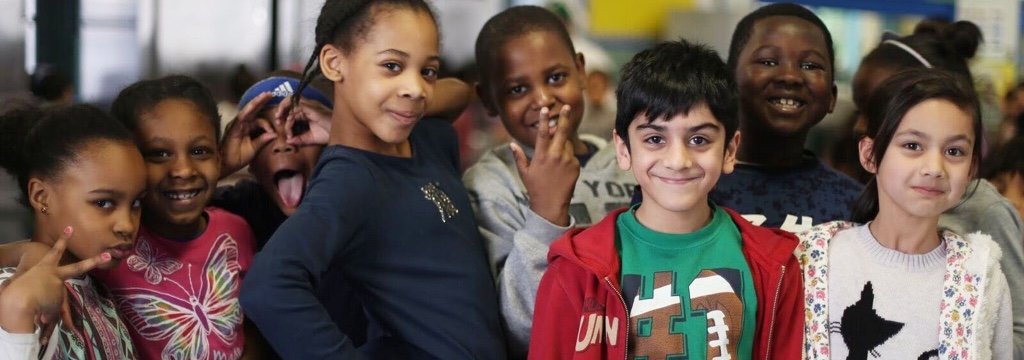Get more from InsideSchools
J.H.S. 217 Robert A. Van Wyck
Share this school
Queens NY 11435
Our Insights
What’s Special
Strong leadership, good teaching and a focus on the environment
The Downside
Huge school may be overwhelming for some
Up a steep hill from Hillside Avenue, JHS 217 teems with students and activity. The huge and diverse school may prove intimidating to some but it also offers benefits of a big school with a wide range of classes, sports and clubs. It has strong leadership that's willing to try new things and teachers who are willing to learn from one another.
JHS 217 has embraced studies about sustainability and the environment. The school makes extensive use of its outdoor space, not only for recess but also for gardens and a classroom. Every year, students watch caterpillars emerge from their cocoons as monarch butterflies, which are then released to fly south to Mexico. Students read books such as A Long Walk to Water, the story of a young refugee who helped bring fresh water to war-torn Sudan. “We try to connect all of our disciplines to sustainability,” Principal Patrick Burns said.
Most classes are well-paced and organized, with a specific goal for each day and an assessment at the end. In one class, a science teacher prodded her attentive students to consider what makes something an experiment. In another, the teacher helped students who are learning English revise their papers.
JHS 217 focuses on teacher training and teachers have a chance to observe one another and trade ideas on pedagogy. The city’s Quality Review praised the staff for providing “meaningful” work and discussions and for offering challenging work to students at all levels, including those who are still learning English. Standardized test scores are about average for the city.
All 8th graders take the Regents exam in algebra. Even if they don’t pass it, the class gives them a head start when they take algebra again in 9th grade, an assistant principal said. Eighth graders also take the Regents exam for Living Environment. Most classes have a range of students of different abilities; there are honors classes in 7th and 8th grade. All classrooms have laptop carts and interactive boards. JHS 217 has an extensive collaboration with nearby Thomas A. Edison Career and Technical Education High School, particularly on technology classes.
JHS 217’s administration seems eager to try new and even unusual programs. It launched a pilot animation program in the hopes of engaging children who struggle in school. A sustainability club, aimed at making JHS 217 a “zero waste” building, includes many students new to the United States and unfamiliar with English. The school is looking at offering a robotics program, perhaps with a Career and Technical Education certificate, and recently has tried having some 8th graders take the Regents exam in U.S. history.
The school offers a range of trips, from going to a local movie theater to a three-day camping trip for some. “As much as we can take them outside the building to learn, we do that,” an assistant principal said.
Children are divided among four houses, each with its own assistant principal, guidance counselor and dean. Sixth graders, in one house, attend classes in an annex, a small building that helps them acclimate to a large school. Children learning English are in another house, and 7th and 8th graders are divided into two houses, one focusing on math and science and the other on law and government. Students meet in weekly “advisories” where they can discuss any problems they may be having.
Like many schools, JHS 217 has moved away using suspensions to discipline students; instead students learn to talk to classmates or teachers they might have harmed—a practice known as restorative justice. “That is more powerful than sending kids to the suspension center and then it’s over,” Burns said.
Despite the efforts, students say on school surveys that bullying can be a problem and some do not feel safe in hallways and bathrooms.
The upside of JHS 217’s size is that it can offer many sports and clubs, including some unusual ones. One, geared to medicine, lets students remotely watch open heart surgery.
SPECIAL EDUCATION: The school has self-contained special education classes and team teaching classes. Given its population, it offers special education services in a number of languages; we visited one class with teachers speaking Arabic and Spanish. The school has launched a cooking program for special education students who have prepared food such as empanadas for sale to teachers.
ADMISSIONS: Neighborhood school. Students from outside the zone in District 28 and from District 25 also may also apply. Within those groups, students are selected at random. There is an open house in the fall. (Gail Robinson, October 2017)
Read more

Comments